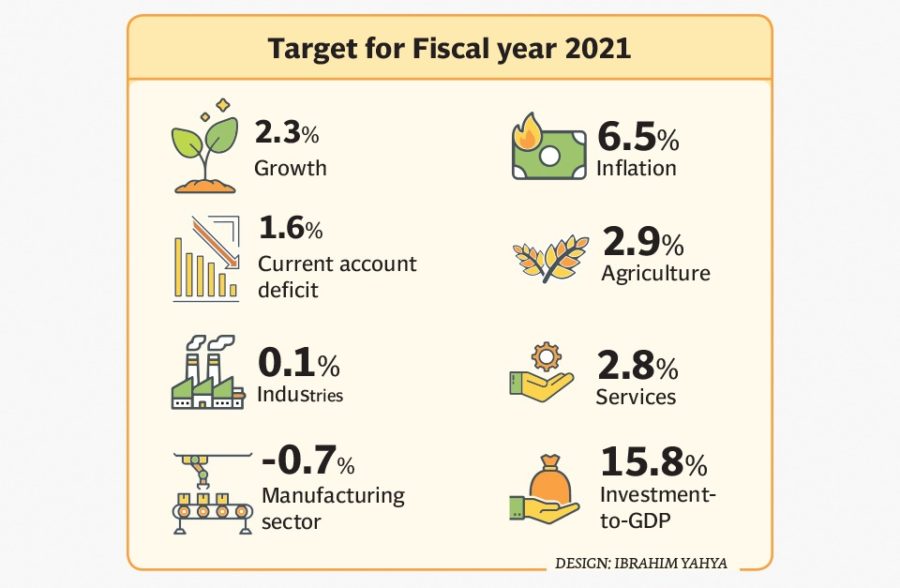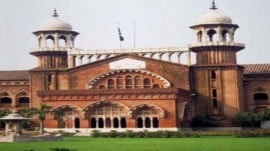
ISLAMABAD: The Pakistan Tehreek-e-Insaf government (PTI) has proposed a target of 2.3% economic growth for its third year in power while admitting that growth prospects for the current year were “eclipsed by higher inflation and interest rates” much before Covid-19 hit the economy.
Worryingly, the unemployment rate that was 5.8% at the end of Pakistan Muslim League-Nawaz (PML-N) tenure has jumped to 8.53% by end of the current fiscal year 2019-20 – the second year of the PTI government, according to official figures of the Ministry of Planning and Development.
As compared to first year of the PTI government, the unemployment ratio surged to 8.53% as over one million people had become unemployed during the outgoing fiscal year.
The 2.3% Gross Domestic Product (GDP) growth target for next fiscal year is almost equal to population growth rate, which means that unemployment will increase in the next fiscal year too.
Therefore, the Ministry of Planning has projected that the unemployment rate will further jump to 9.6% with 850,000 more people becoming unemployed by the end of the third year of the PTI government.
The Annual Plan Coordination Committee (APCC) on Friday cleared macroeconomic framework for fiscal year 2020-21, including the setting of inflation target at 6.5%.

The economic plan will now be tabled before the National Economic Council (NEC) on June 8 for its formal endorsement, which will be headed by Prime Minister Imran Khan.
However, the Ministry of Finance and State Bank of Pakistan suggested in the meeting that the GDP growth target should be set below 2% with the finance ministry projecting only 1.8% growth in the next fiscal year.
The NEC is a constitutional body responsible for macroeconomic planning and the deputy chairman of the Planning Commission heads the APCC.
In its working paper for the APCC, the Ministry of Planning made a realistic assessment of reasons behind contraction of the economy during the outgoing fiscal year 2019-20.
“Prospects for economic growth even before emergence of Covid-19 phenomenon were eclipsed by higher inflation and interest rates, negative LSM growth, weaker exports, sluggish resource mobilisation, uncertainty surrounding hot money inflows and above all tough IMF programme related conditionalities,” underlined the planning ministry.
It added that the IMF programme brought stabilisation but at the cost of economic growth.
“High policy rate, exchange rate and taxation reforms have increased cost of doing business and have hampered industrial growth,” the planning ministry said.
“It is, therefore, not surprising that economic growth in Pakistan contracted to -0.4% in 2019-20 when the country already had weak economic growth of just 1.9% in the previous year,” it added.
“The Covid-19 further compounded long-standing challenges of the real sector, especially the industrial and services sectors.”
It caused multifaceted problems and engulfed entire economies besides challenging the healthcare systems.
In his presentation to the APCC, joint chief economist Rai Nasir Ali stated that tightening of financial conditions could also complicate refinancing of maturing external debt.
There was a sharp spike in the flight of capital from Pakistan as over $3 billion hot foreign money was withdrawn from the country, increasing external sector risks.
Economic Outlook
The planning ministry observed that the economic landscape in the coming year again predominantly depends upon the control of the pandemic.
The ministry said even if the lockdown is completely lifted before the commencement of the next fiscal year, the second-round impact of Covid-19 will still mar the growth performance of the country.
Average inflation rate for the next fiscal year is projected at 6.5%, which is lower than the IMF forecast of 8%.
The government’s macroeconomic targets were largely in line with the IMF projections which have put economic growth at 2% for the next fiscal year.
The GDP growth for 2020-21 is targeted at 2.3% with 2.9% contribution from agriculture, 2.8% from services and just 0.1% from industries.
“The growth targets are subject to favourable weather conditions, post Covid-19 economic recovery, managing current account deficit, consistent economic policies and aligned monetary and fiscal policies,” the planning ministry said.
According to the APCC, the industrial sector is projected to grow by 0.1% and manufacturing sector is expected to contract by 0.7% based on LSM contraction of 2.5% in the next fiscal year.
The construction and electricity generation & gas distribution are targeted to grow by 1.4% and 3.5% respectively.
The services sector is expected to grow at a pace of 2.8%, as against 0.6% contraction in the outgoing fiscal year.
The national savings are projected to increase to 14.2% as against 13.9% of the GDP this year.
The total investment is also projected to slightly increase to 15.8% of the GDP as against 15.4% this year.
The public investment has been projected at 3.8% of the GDP for the next fiscal year, which remains unchanged.
Balance of Payment outlook
The planning ministry noted that the global demand of commodities would be reduced as compared to the pre-Covid period and Pakistan’s exporters would be facing domestic and external challenges in the next fiscal year.
The import demand, despite fall in crude oil prices, is likely to increase marginally but the export pick-up will not be able to neutralise it. Resultantly, the trade deficit is projected at 7.1% of the GDP.
The current account deficit is projected at 1.6% of GDP in 2020-21 with expected growth of exports and imports at 1.5% and 1.1% respectively.































































COMMENTS
Comments are moderated and generally will be posted if they are on-topic and not abusive.
For more information, please see our Comments FAQ